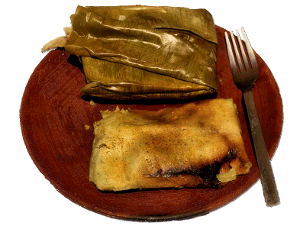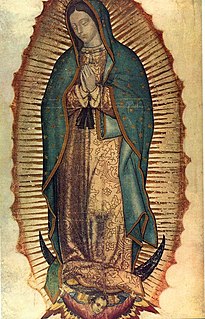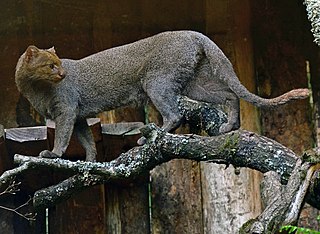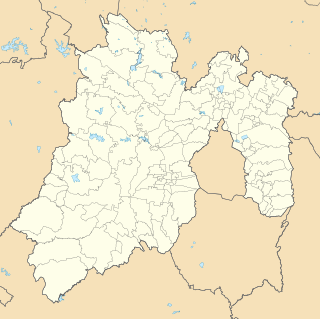Related Research Articles

North America is a continent entirely within the Northern Hemisphere and almost all within the Western Hemisphere. It can also be described as a northern subcontinent of the Americas. It is bordered to the north by the Arctic Ocean, to the east by the Atlantic Ocean, to the southeast by South America and the Caribbean Sea, and to the west and south by the Pacific Ocean.

The Viceroyalty of New Spain was an integral territorial entity of the Spanish Empire, established by Habsburg Spain during the Spanish colonization of the Americas. It covered a huge area that included much of North America, northern parts of South America and several Pacific Ocean archipelagos, namely the Philippines and Guam. It originated in 1521 after the fall of Tenochtitlan, the main event of the Spanish conquest, and officially created on 18 August 1521 as a kingdom and later, the first of four viceroyalties Spain created in the Americas. Its first viceroy was Antonio de Mendoza y Pacheco, and the capital of the kingdom was Mexico City, established on the ancient Mēxihco-Tenōchtitlan.

A tamale or tamal is a traditional Mesoamerican dish, made of masa or dough, which is steamed in a corn husk or banana leaf. The wrapping can either be discarded prior to eating or used as a plate. Tamales can be filled with meats, cheeses, fruits, vegetables, chilies or any preparation according to taste, and both the filling and the cooking liquid may be seasoned.

Our Lady of Guadalupe, also known as the Virgin of Guadalupe, is a Catholic title of the Blessed Virgin Mary associated with a series of five Marian apparitions in December 1531, and a venerated image on a cloak enshrined within the Basilica of Our Lady of Guadalupe in Mexico City. The basilica is the most-visited Catholic shrine in the world, and the world's third most-visited sacred site.

Selena Quintanilla-Pérez was an American singer, songwriter, spokesperson, businesswoman, model, actress, and fashion designer. Referred to as the "Queen of Tejano music", her contributions to music and fashion made her one of the most celebrated Mexican-American entertainers of the late 20th century. Billboard magazine named her the top-selling Latin artist of the 1990s decade, while her posthumous collaboration with MAC cosmetics became the best-selling celebrity collection in cosmetics history. Media outlets called her the "Tejano Madonna" for her clothing choices. She also ranks among the most influential Latin artists of all time and is credited for catapulting a music genre into the mainstream market.

Guadalajara is a metropolis in western Mexico and the capital of the state of Jalisco. The city has a population of 1,460,148, while the Guadalajara metropolitan area has a population of 5,002,466, making it the second-largest metropolitan area in the country. Guadalajara has the second highest population density in Mexico, with over 10,361 people per square kilometre. Guadalajara is an international center of business, finance, arts, and culture, as well as the economic center of the Bajío region, one of the most productive and developed regions in Latin America.

The pre-Columbian era incorporates all period subdivisions in the history of the Americas before the appearance of significant European influences on the American continent, spanning the time of the original settlement in the Upper Paleolithic period to European colonization during the Early Modern period.

Chicano rock is rock music performed by Mexican American (Chicano) groups or music with themes derived from Chicano culture. Chicano Rock, to a great extent, does not refer to any single style or approach. Some of these groups do not sing in Spanish at all, or use many specific Latin instruments or sounds. The subgenre is defined by the ethnicity of its performers, and as a result covers a wide range of approaches.

Geronimo was a prominent leader and medicine man from the Bedonkohe band of the Apache tribe. From 1850 to 1886, Geronimo joined with members of three other Chiricahua Apache bands—the Tchihende, the Tsokanende and the Nednhi—to carry out numerous raids, as well as fight against Mexican and U.S. military campaigns in the northern Mexico states of Chihuahua and Sonora and in the southwestern American territories of New Mexico and Arizona. Geronimo's raids and related combat actions were a part of the prolonged period of the Apache–United States conflict, which started with American settlement in Apache lands following the end of the war with Mexico in 1848.

The Pan-American Highway is a network of roads stretching across the American continents and measuring about 30,000 kilometres (19,000 mi) in total length. Except for a rainforest break of approximately 106 km (70 mi) across the border between southeast Panama and northwest Colombia, called the Darién Gap, the roads link almost all of the Pacific coastal countries of the Americas in a connected highway system. According to Guinness World Records, the Pan-American Highway is the world's longest "motorable road". However, because of the Darién Gap, it is not possible to cross between South America and Central America with conventional highway vehicles. Without an all-terrain vehicle, the only way to safely navigate this terrestrial stretch is by sea.

The jaguarundi is a wild cat native to the Americas. Its range extends from central Argentina in the south to the US–Mexico border in the north, through Central and South America east of the Andes. The jaguarundi is a medium-sized cat of slender build. Its coloration is uniform, similar to that of its closest relative, the much larger cougar, but differing significantly from other New World cats, such as the small spotted cats in the genus Leopardus. It has an elongated body, with relatively short legs, a small, narrow head, small, round ears, a short snout, and a long tail, resembling mustelids in these respects. It is around twice as large as a domestic cat, reaching nearly 36 cm (14 in) at the shoulder, and weighs 3.5–7 kg (7.7–15.4 lb). It has two color morphs — gray and red.

Club de Fútbol América S.A. de C.V., commonly known as Club América or simply América, is a professional football club based in Mexico City, Mexico. Nicknamed Las Águilas, it competes in Liga MX, the top tier of Mexican football. The club was founded in 1916, and since 1959 has been owned by media company Grupo Televisa. The team plays its home games at the Estadio Azteca, the largest stadium in Latin America, and one of the largest stadiums in the world.

The American crocodile is a species of crocodilian found in the Neotropics. It is the most widespread of the four extant species of crocodiles from the Americas, with populations present from South Florida and the coasts of Mexico to as far south as Peru and Venezuela.
The most popular sport in Mexico currently is association football followed by boxing. However, there are regional variations: for example, baseball is the most popular sport in the northwest and the southeast of the country. Basketball, American football and bull riding are also popular. The tradition of bullfighting remains strong in Mexico.

Nevado de Toluca is a stratovolcano in central Mexico, located about 80 kilometres (50 mi) west of Mexico City near the city of Toluca. It is the fourth highest of Mexico's peaks, after Pico de Orizaba, Popocatépetl and Iztaccíhuatl. The volcano and the area around it is now a national park.

Mexico, officially the United Mexican States, is a country in the southern portion of North America. It is bordered to the north by the United States; to the south and west by the Pacific Ocean; to the southeast by Guatemala, Belize, and the Caribbean Sea; and to the east by the Gulf of Mexico. Mexico covers 1,972,550 square kilometers (761,610 sq mi) and has approximately 128,649,565 inhabitants, making it the world's 13th-largest country by area, 10th-most-populous country, and most populous Spanish-speaking nation. It is a federation comprising 31 states and Mexico City, its capital city and largest metropolis. Other major urban areas include Guadalajara, Monterrey, Puebla, Toluca, Tijuana, Ciudad Juárez, and León.
The family Archeocrypticidae is a small group of beetles with no vernacular common name, though recent authors have coined the name cryptic fungus beetles. Adults and larvae seems to be saprophagous and are often found in plant litter. Worldwide, about 10 genera and 50 species are found, most species are pantropical. Enneboeus caseyi has been recorded from the American South, Central America, and Mexico. About 20 species are found in Australia, in the genera Enneboeus and Australenneboeus.

The Gulf of Mexico is an ocean basin and a marginal sea of the Atlantic Ocean, largely surrounded by the North American continent. It is bound on the northeast, north and northwest by the Gulf Coast of the United States, on the southwest and south by the Mexican states of Tamaulipas, Veracruz, Tabasco, Campeche, Yucatan, and Quintana Roo, and on the southeast by Cuba. The US states of Texas, Louisiana, Mississippi, Alabama, and Florida border the Gulf on the north, which are often referred to as the "Third Coast", in comparison with the U.S. Atlantic and Pacific coasts.

Frightful Cave is a pre-Columbian archaeological site located in the state of Coahuila in northern Mexico. It was occupied on several occasions during the Archaic period by what seem to be nomadic hunter-gatherer groups and is an important source of archaeological evidence concerning the ancient desert tradition of the Central Mexican highlands.

Blaxicans are people who are both Black and Mexican American. Some may prefer to identify as Afro-Chicano or Black Chicana/o and embrace Chicano identity, culture, and political consciousness. Most Blaxicans have origins in working class community interactions between Black Americans and Mexican Americans. Los Angeles has been cited as the hub for Blaxican culture. In 2010, it was recorded that 42,000 people in Los Angeles County identified as both Black and Latino, most of whom are believed to be both Black and Mexican American.
References
| This article relating to the moth subfamily Hypoptinae is a stub. You can help Wikipedia by expanding it. |